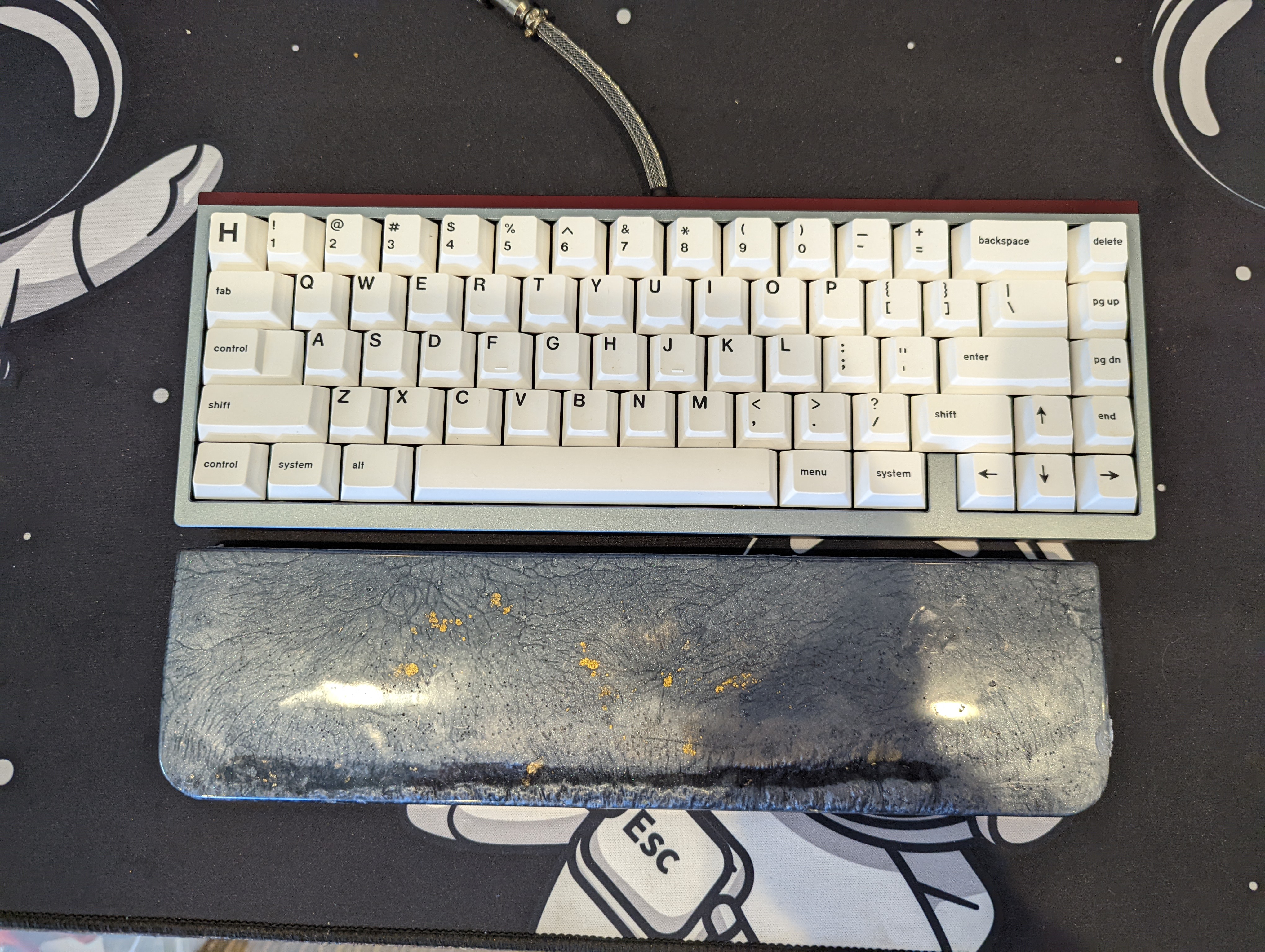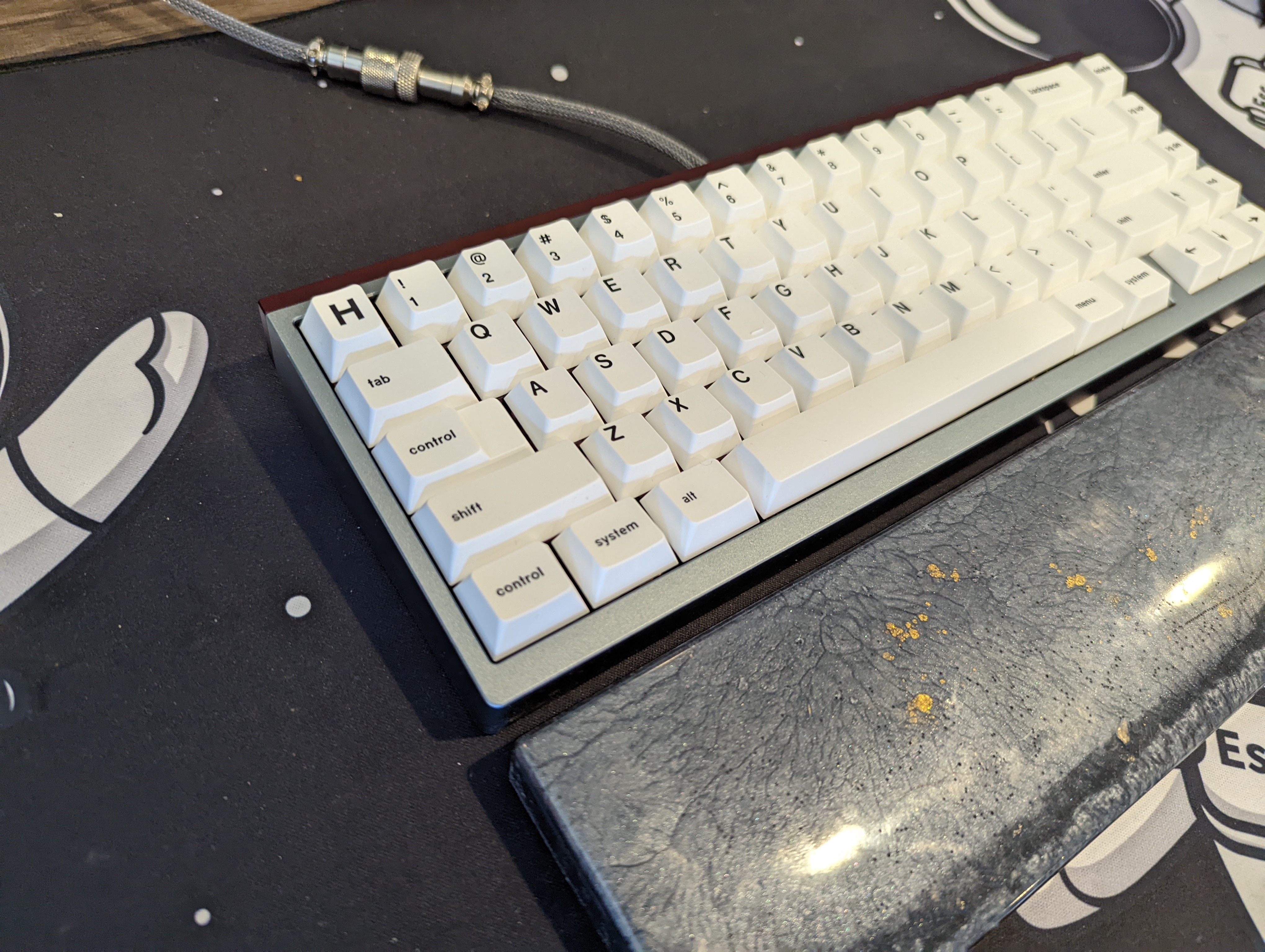28 February 2022
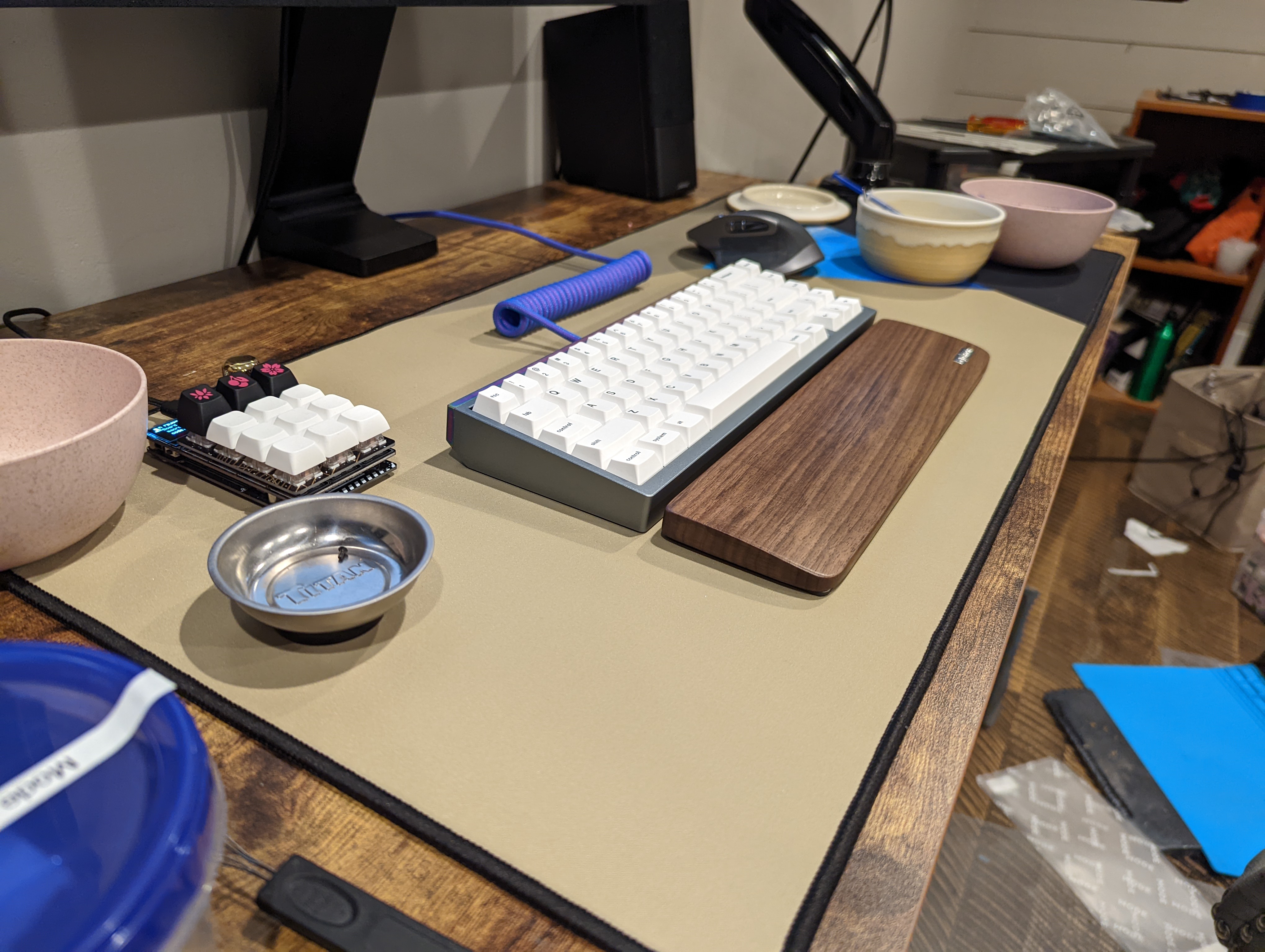
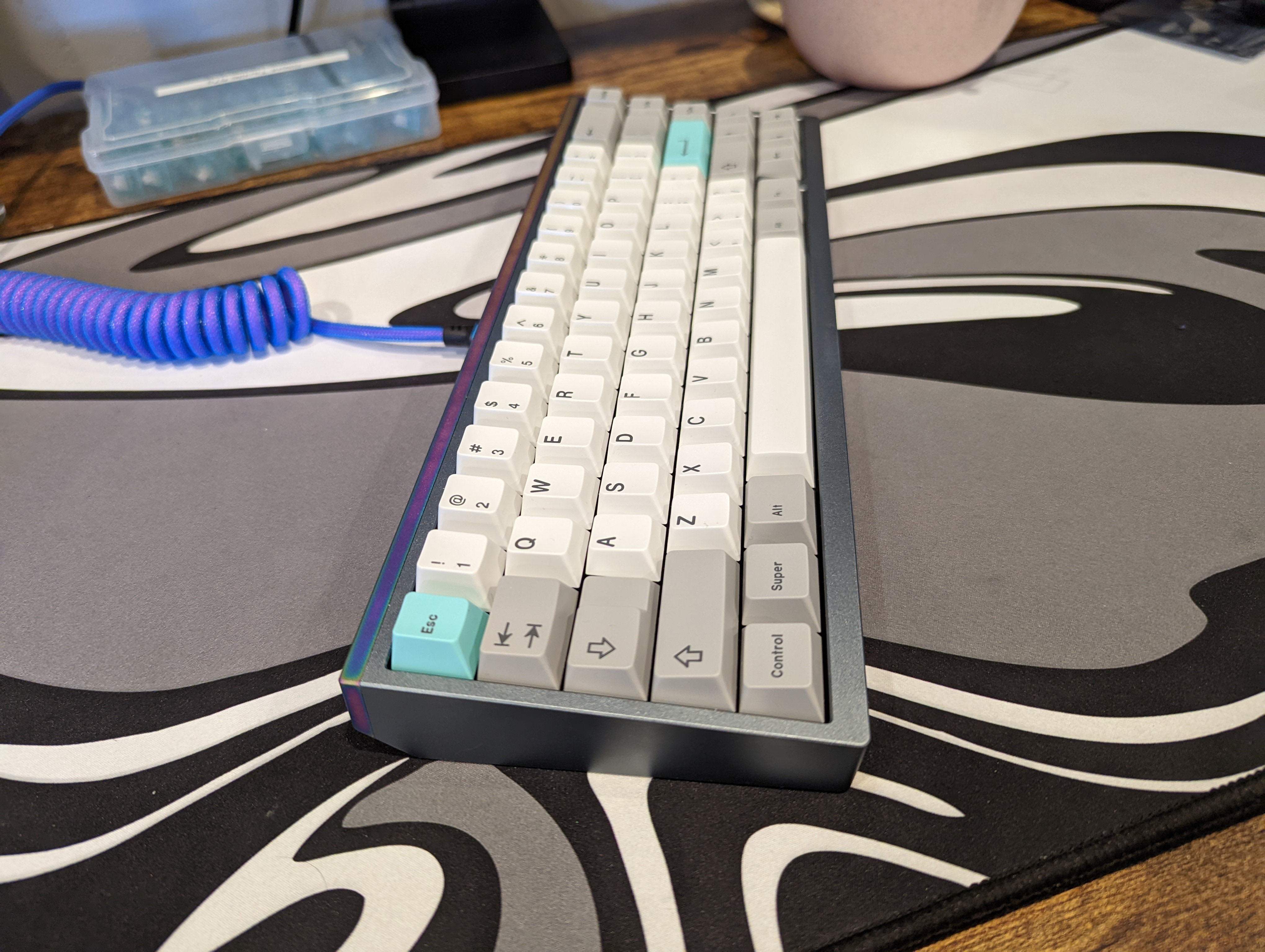
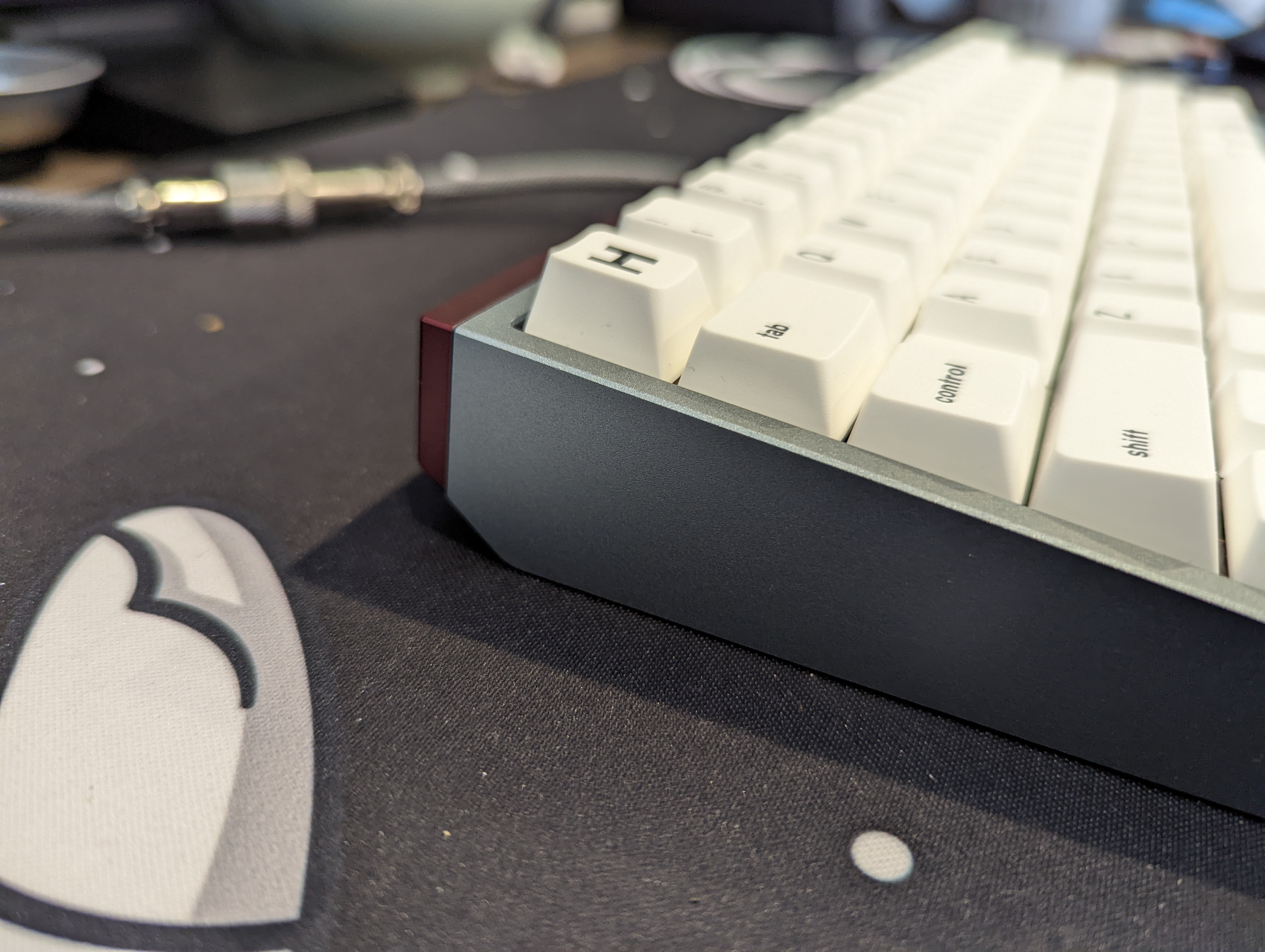
The Mode SixtyFive is either essentially Top-mount (with rubber isolation inserts) or “Stack mount”, which is basically achieved by using the Silicone case dampener, which fits right against the bottom of the PCB. Stack mount relies on pressure from below the PCB by the silicone, whereas top mount obviously supports the PCB and plate from the top.
What I found to be the best option for me was screwing in the plate to the top-case with the rubber sleeves over the divets that are used for the mounting, and also to use the Silicone. This will largely be personal preference. I didn’t find the Mode SixtyFive to be very flexy without the Silicone dampener underneath, so using it to tighten up the sound does work but sort of does detract from sound and feel, even in the case of a full plate build. Some people will like the resonance the Mode produces. I and others describe it as a thudding sound upon keystrokes. This can be minimized by adding an additional o-ring to the top-mount points. I also found that Polyfil reduced this thudding without removing much flex.
The flexiest configuration, and the most in need of help when it came to the thudding sound, I tried was with the half-plate, and a PCB with alphas that flex independently from the mods. It makes sense to me that the config that makes you feel most vibration would also suffer from the sound, thudding or hollow resonance (whatever you want to call that sound). At first I was not a fan of the typing feel. I had never typed on a keyboard without a plate (in this case just the alphas). The first combination I tried, it just wasn’t for me and I wound up desoldering it. But, the second time I did, I really fell in love with it. I used some of Divinikey’s new in-house switch, the Saru. It’s a tactile switch with a long pole stem.
The first build was with the Mode Signal tactiles and I didn’t like those with the half plate, and I was a little wary of trying another tactile switch for the half plate. It turned out really quite nicely. The sound of the Saru’s long poles smacking the housing really brings out an interesting sound on the plateless alphas. I gave myself time to adjust to the increased vibration, and I’m so glad I did. I went from not liking the Mode 65 all that much (preferring my far cheaper Bakaneko) to liking it quite a bit, and no longer thinking about selling it.
The implementation of the half plate by Mode is interesting. The soldered PCB has 2 long flex cuts along the bottom and top of the alphas, where there is no plate on half plate builds. The sparing but intentional use of flex cuts makes for a board that is pretty flexy, most in fact, in the center of the alphas. Common sense and basic physical laws dictate that on a alpha section that flexes independently, a keystroke in the center has the most leverage to move the plate downward.In practice, it’s not that noticeable when you just start to use the keyboard and stop analyzing everything so closely.
I was worried a half plate would be weird, since some keys have plate and some don’t. I am, as this writing probably lets on, pretty new in the hobby and still trying things like half plates for the first time. Actually, the bounce wasn’t a bad thing, or even that noticeable during typing. Some people won’t like the feel, but that is why there are so many options available with the Mode 65, and there’s a good chance your preferences will be supported. Not that it’s for everyone.
[Click the Picture for Sound Test]
The second most flexible config I tried was the POM full plate, without the silicone, but I still noticed some resonance. The flexiblity here came from the POM material being very soft and flexible. The POM, to my ears, muted a lot of the switch sound, and this just made the resonance even more annoying, since there was less switch noise to overpower it. This annoyed me for a while but I just got used to it, and it now just feels like something that gives the board character.
Reluctantly, I tried using all the foam and silicone, with FR4 plate, which doesn’t flex at all but feels and sounds the best, and for me was worth the compromise of the little bit of flexibility. It still feels softer than my Tofu as it should, and isn’t too stiff for long typing sessions. That combination was fine, but to me boring.
Still, I think maybe I prefer a Gummy O-ring in a Bakaneko to the Mode for sound and feel, at a third of the price. The Bakaneko lacks some high end features like CNC milling but it’s still a better value than the Mode. The Mode is a good board in general, and about average for value for money. I would keep in mind that you won’t like this if you don’t like top mount or stack mount. This should be obvious, but this will not flex like your gasket mount or gummy o-ring boards.
